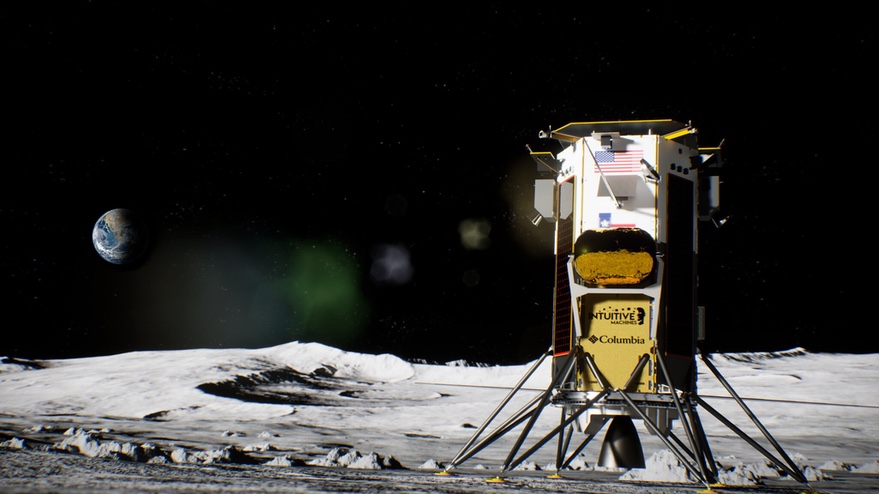PARIS — Intuitive Machines, a company developing lunar landers and related capabilities for NASA and other customers, will go public through a merger with a special purpose acquisition company (SPAC), it announced Sept. 16.
Houston-based Intuitive Machines said it will merge with Inflection Point Acquisition Corp., a SPAC trading on the Nasdaq exchange. The merged company would have a pro forma enterprise value of $815 million.
Inflection Point has $330 million of cash in trust, although that money is subject to redemptions from shareholders if they elect not to hold stock in the merged company and request their money back. The deal includes $55 million in secured capital separate from the SPAC holdings from the SPAC’s sponsor as well as a founder of Intuitive Machines, and a $50 million equity facility from CF Principal Investments LLC, an affiliate of Cantor Fitzgerald & Company. The companies said will support the Intuitive Machines business plan to profitability, which it expects to be in two to three years.
Intuitive Machines is developing a series of lunar landers, including three missions that are part of NASA’s Commercial Lunar Payload Services program. The first of those missions, IM-1, is scheduled to launch in early 2023. The company is also developing a satellite network to provide communication around the moon.
“We are in a leading position in the development of lunar space, to be for the moon what steamships, toll roads and rail companies were to Earth economies,” Steve Altemus, president and chief executive of Intuitive Machines, said in a statement.
“This transaction will provide the capital to execute on the rapidly growing demand for the company’s proprietary technologies and services with key government and commercial customers,” said Michael Blitzer, co-chief executive of Inflection Point, in the statement.
Intuitive Machines recorded $73 million in revenue in 2021, according to an investor presentation, and estimates $102 million in revenue in 2022. The company’s projections call for that increasing to $759 million in 2024, with lunar lander revenue supplemented by lunar data services and other new products and services, including a potential entry into the in-space servicing market. That presentation projected the company breaking even, in terms of earnings before interest, taxes, depreciation, and amortization (EBITDA), in 2024.
The deal is the first involving a space company merging with a SPAC since early in the year. The surge of interest in space SPACs from late 2020 through 2021 has faded, along with SPACs in general, given the poor performance on the stock market of many of the companies that went public through that approach.
D-Orbit, which announced a SPAC merger in January, canceled that deal Aug. 12, citing changing market conditions caused in part by the war in Ukraine. That left satellite communications equipment maker Satixfy as the only space industry company still pursuing a SPAC merger, which it expects to close by the end of the year.
Mike Palmer, managing director of Cerberus Capital Management, said during a panel at World Satellite Business Week Sept. 12 that some investors saw SPACs as a shortcut to get into an interesting but “intimidating” market like space. “It all happened very fast, probably a little too fast.”
